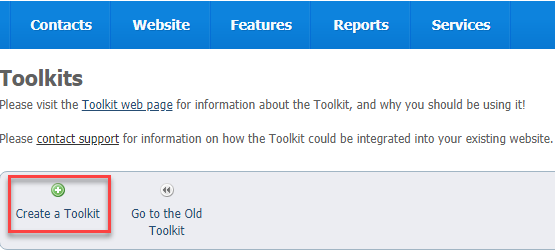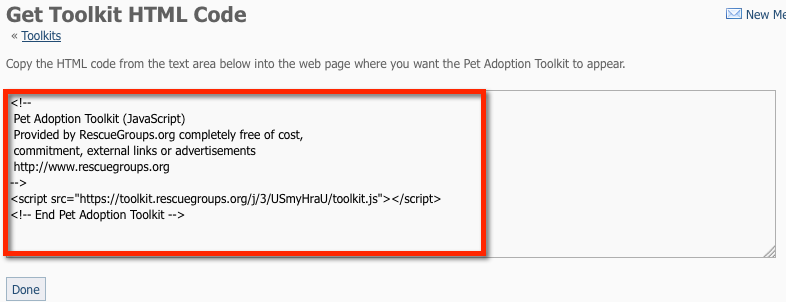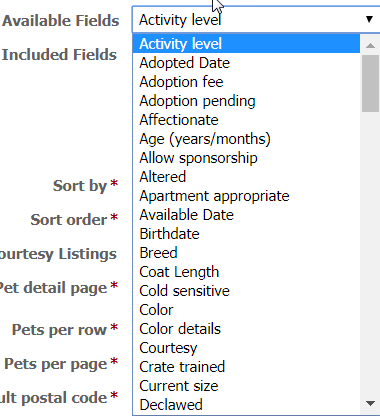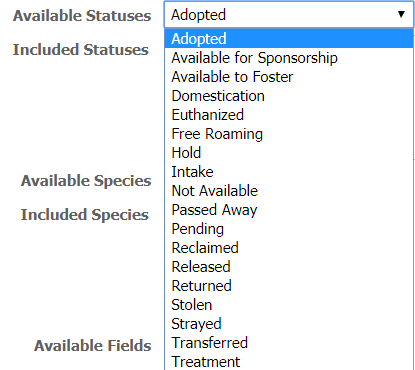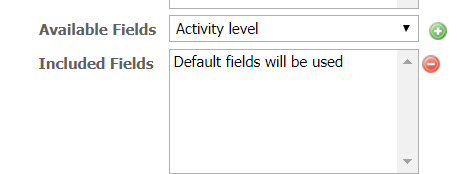Page History
...
- From the Features > Pet Adoption Toolkit, select Create a Toolkit. This action takes you to an information form, Create a Toolkit, that you will fill out to ensure your toolkit is customized to your needs.
The Create a Toolkit page opens. Enter the following information for the Toolkit on the Create a Toolkit page.
Key Field
Field Description
Name
A descriptive name for this Key. This is how you will identify this specific Toolkit.
Website Name/Title Enter the name of the website where this Toolkit will be hosted. This is used for page titles and social sharing. We recommend that you use the name of your organization for the Title. Search layout Select the layout/style you would like to use for the search page of your Toolkit. Click thePreview the Layouts link to see examples of the layouts. Pet detail layout Select the layout/style you would like to use for the pet detail page. You can see examples by using the Preview link. Select None if you do not want to have a pet detail page. Website URL Enter the URL for the website where this Toolkit will be hosted. The URL must be the direct link to the web page. This URL is used by social sharing to redirect the visitor to your website (most often to a specific pet on your website). Included Statuses
Select the individual statuses that you want to display in this Toolkit. Each status you include must also be a public status by the organization.
Included Species
Select the individual species that you want to make public in this Key.
Included Fields
Select the individual pet data fields that you want to make public in this Key. These fields are then included for display on the list or grid view, not the animal detail page.
Sort by and Sort order Select the field you would like to sort the results by (default), and the order (ascending or descending). Include Courtesy Listings
Select if you would like to include, exclude or include only your courtesy listings in this Toolkit.
Pet detail page Select if you would like to use the Inline or bPopup option for your pet detail page. The inline option will replace the search content with the animal detail content, but the bPopup will open a "popover" with the animal detail information. Pets per row and Pets per page
Select how many pets should be shown per row and how many pets per page. Not all search layouts use both options – For example, the list layouts only use the Pets per page option.
Default postal code
Enter the default postal/zip code we should use for animal searches if we are unable to determine the visitors' geographic location.
Show the search form Select if you would like to show the search form. If you select No the search fields will be hidden on the Search page (except in Grid 1). Search results style Select the style for the search results pictures.
Table: the pictures will keep their original aspect ratio
Fixed: the pictures will be zoomed/cropped to fit the fixed size (some of the pictures may not be visible)
Columns: (coming soon)- Copy the resulting HTML code.
- Click Save Toolkit to save your selections.
- Copy and paste the HTML code into your web page:
- Click the HTML icon.
- Copy the code into your web page where you want the Toolkit to appear.
- Click Done to save the Toolkit and move on to style the Toolkit and add Advanced Filters.
- Click the HTML icon.
...
To use these sections, click the down arrow next to the field, such as Available Fields, and use your cursor to highlight a selection. Then on the right of the field, click the green plus arrow to add it. It will be copied from the Available Fields to the Included Fields section and will be added to your layout.
| Info |
|---|
Included fields are displayed on the list/grid view, not the animal detail page. |
Be selective in choosing fields to display on the toolkit. When you include a field, the toolkit displays the result of that entry, not the name of the entry and the result. Therefore, if you select a field whose result could be yes or no, you may see the example below displayed on your toolkit search layout. Your visitor has no idea what that yes or no means. Likewise, if you include the adoption fee, it will not display as a monetary value, simply as a number, and a visitor may not immediately grasp what that number means. We recommend you put the adoption fee in the description instead of in the toolkit layout.
...
